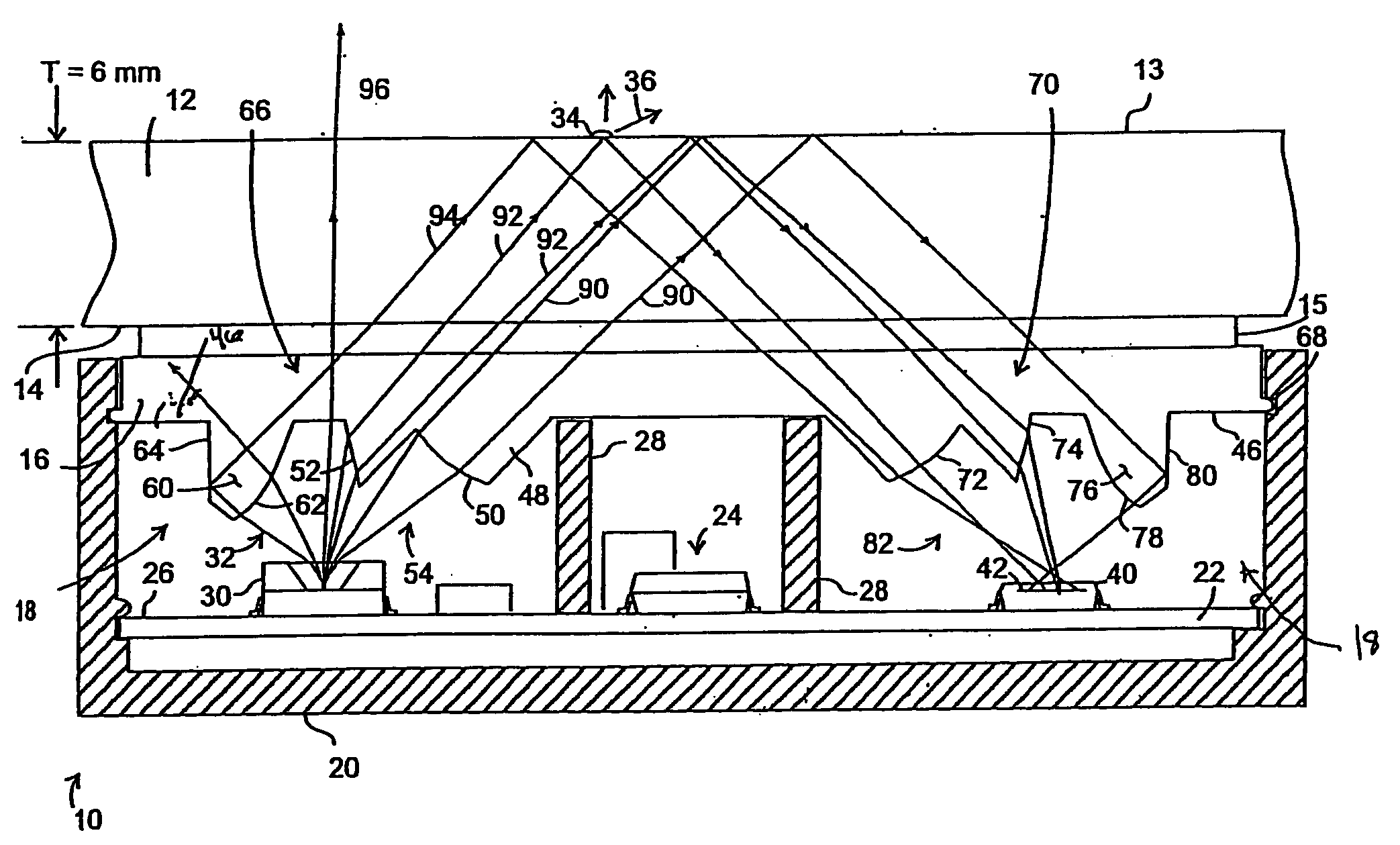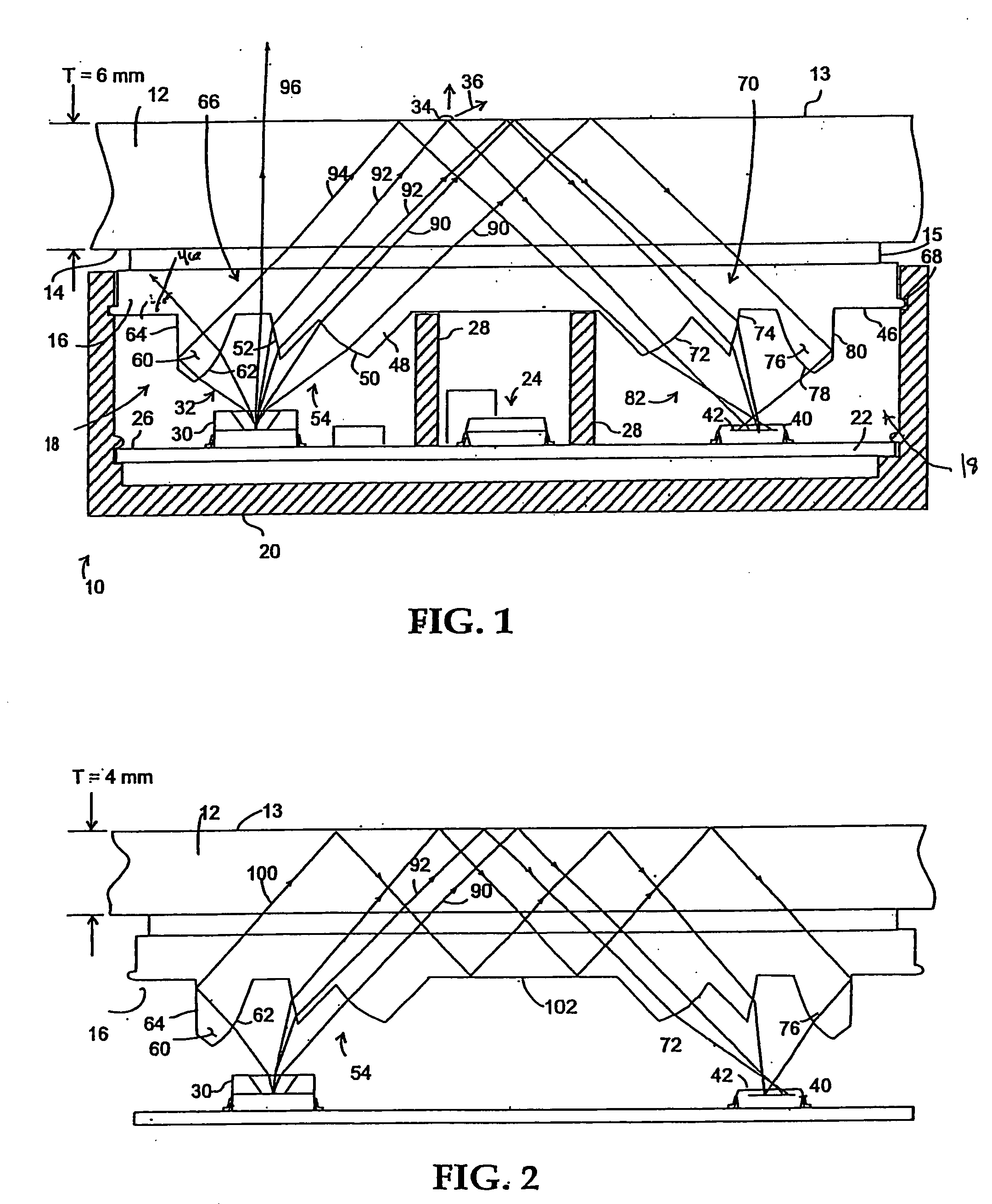Multi-mode rain sensor
a rain sensor and multi-mode technology, applied in the field of optical rain sensors, can solve the problems of less suitable deployment approach, less aesthetically pleasing, and more expensive rain sensors, and achieve the effect of exceptional performan
- Summary
- Abstract
- Description
- Claims
- Application Information
AI Technical Summary
Benefits of technology
Problems solved by technology
Method used
Image
Examples
Embodiment Construction
[0028]The rain sensor of the present invention allows a single rain sensor to efficiently detect the amount of moisture on vehicle windows of widely varying thickness, ranging from unusually thin windows, especially windshields, found on, for example, sports cars to exceptionally thick windows found on, for example, farm tractors. Achieving such efficiency, while keeping the physical size of the rain sensor small, and the cost of manufacturing same low, is, generally accomplished by maximizing the “extent” of the detector(s) of light rays which can then utilize a greater fraction of the light rays generated by the emitter(s). Deflection and direction of light rays by an assemblage of lenses adjacent the emitter(s) and detector(s) is also part of the present invention.
[0029]The amount of infrared (IR) energy transmittance through a window also affects the efficiency of operation of rain sensors, as earlier discussed herein. In order to account for not only variations in IR energy (or...
PUM
 Login to View More
Login to View More Abstract
Description
Claims
Application Information
 Login to View More
Login to View More - R&D
- Intellectual Property
- Life Sciences
- Materials
- Tech Scout
- Unparalleled Data Quality
- Higher Quality Content
- 60% Fewer Hallucinations
Browse by: Latest US Patents, China's latest patents, Technical Efficacy Thesaurus, Application Domain, Technology Topic, Popular Technical Reports.
© 2025 PatSnap. All rights reserved.Legal|Privacy policy|Modern Slavery Act Transparency Statement|Sitemap|About US| Contact US: help@patsnap.com



